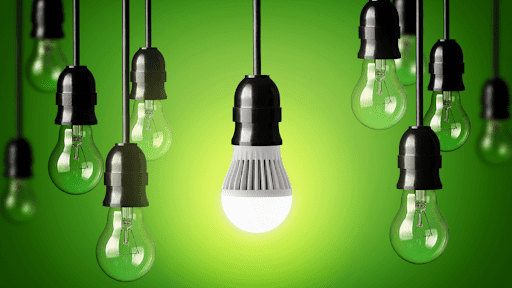For decades a light bulb was a light bulb but scientists discovered 90% of energy usage from a traditional incandescent was emitted through heat, not light. The goal was to create a bulb that provided light without wasting energy and money on heating the bulb. By 1994, a new energy-efficient bulb with light-emitting diodes (LED) was perfected. They were expensive at first but today they save us money and help reduce our carbon footprint.
Switch Your Bulbs Out
Switching from traditional incandescent lighting to more energy-efficient alternatives, while pricier upfront, will ultimately save you money and energy. If you run a 100-watt incandescent bulb for an entire year, for instance, not only would you have to replace it 12 times but it would cost around $132 on your energy bill — plus the cost of 12 new bulbs. LEDs, however, can run for an entire year on one bulb at about $21 total.
Kids Can Help Too
A fun way to bring the family together is to get the kids excited about saving energy and helping make your family’s home greener. We teach our kids to turn off the lights when they leave the room but this is also a great opportunity to teach them how to change the bulbs and why.
Holidays Shine LED Bright
The holidays and less daylight are ground zero for energy usage peaks every year. Try decorating with LED lights, candles, and displays this year instead. LED Christmas lights use 90% less electricity than traditional lighting options, for instance.
While U.S. energy-related carbon dioxide emissions decrease by almost 3% annually, globally we’re still emitting over 33 billion metric tons every year. Using LEDs is one step closer to help keep emissions down.
